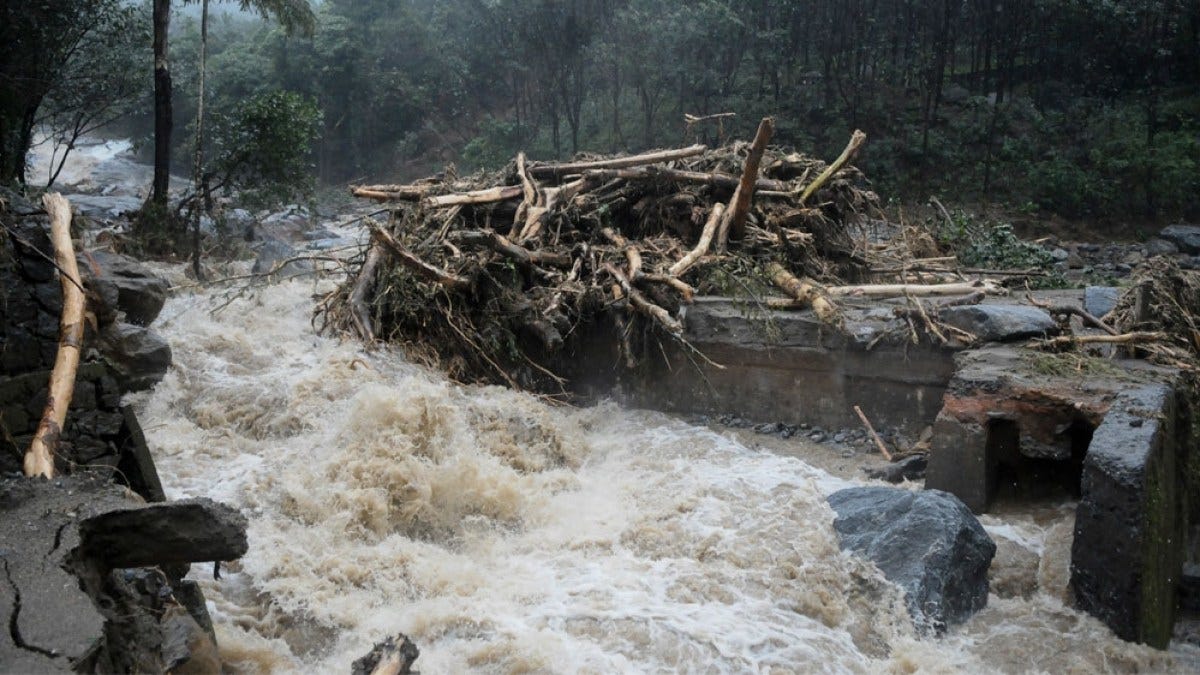Kerala Forests’ Soil Carbon Collapse
Devastating floods between 2018 and 2021 triggered a 30 million tonne soil carbon loss, accounting for 72% of the state’s total carbon decline
Kerala’s forests have lost 42 million tonnes of carbon between 2017 and 2023, according to the National Statistics Office’s Environmental Accounting on Forest 2025 report. Nearly three-quarters of this loss occurred underground, in the soil itself.
Soil organic carbon fell by 29.95 million tonnes, dropping from 154 million tonnes in 2017 to 124 million tonnes in 2023. This 19.45% decline represents 71.7% of Kerala’s total carbon stock loss of 41.8 million tonnes.
The pattern reveals where the real damage is occurring. Above-ground tree biomass declined by 8.9 million tonnes, a 12.03% drop. But the soil carbon loss was more than three times larger. Below-ground biomass, including roots, fell by just 1 million tonnes, a relatively modest 4.99% decline.
Forest floor litter collapsed by 55.37%, falling from 7.4 million tonnes to 3.3 million tonnes. This layer of dead leaves and organic matter is crucial for soil carbon formation. The dramatic decline suggests either accelerated decomposition or removal of organic material.
Even though the NSO data does not provide a spatial breakdown or specify the mechanisms driving the decline, the devastating floods in 2018, 2019 and 2021 are the major drivers of this soil carbon collapse. These floods eroded and redistributed topsoil, washing it from slopes down to valleys. When topsoil loses its position and structure, the remaining soil loses its capacity to retain moisture.
This sets up a cascade of ecological stress. Under the extreme heat of Solar Cycle 25, trees growing in degraded soil with poor moisture retention face severe stress. Many die. Dead wood surged by 204%, rising from 1.1 million tonnes to 3.2 million tonnes. This dramatic increase of 2.2 million tonnes reflects both flood damage to trees and subsequent heat-stress mortality.
The floods also dispersed seeds widely across the landscape. This helps explain the dramatic expansion of open forest. Open forest, with sparse canopy cover between 10% and 40%, expanded by 52.98%, adding 3,704 square kilometres. Very dense forest increased by 33.50%, adding 512 square kilometres.
This new growth consists of young trees with high volume but low carbon density. Growing stock rose by 10.86%, from 152 million cubic metres to 169 million cubic metres. But young, fast-growing trees in degraded soil cannot compensate for the massive loss of soil carbon accumulated over centuries.
The declining carbon storage capacity has reduced the value of forest ecosystem services. Carbon retention services fell from 2.63% of State Gross Domestic Product in 2015-16 to 1.97% in 2021-22.
The NSO data demonstrates that expanding forest cover does not guarantee carbon storage when soil degradation occurs. Soil organic carbon typically accumulates over centuries in healthy ecosystems. But it can be lost rapidly through erosion and redistribution. Even when topsoil isn’t entirely lost but merely displaced, the disruption destroys its moisture retention capacity and carbon storage function.
